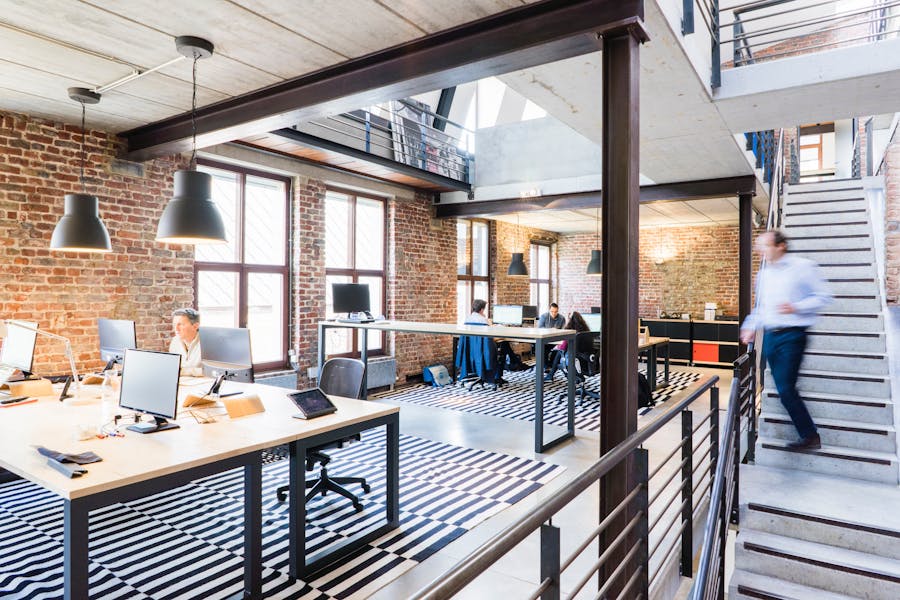
Discover how sound masking technology helps businesses create more productive, private, and comfortable work environments.
If you manage office space in Denver (or any other office building in the US), you’re probably familiar with a common tenant complaint: lack of speech privacy and noise distraction. Those beautiful open floor plans and modern glass-walled conference rooms that many tenants tend to favor can also create serious acoustic challenges.
While some building owners turn to expensive architectural solutions, acoustic treatments, white noise, or background music, there’s a more effective approach that many Denver businesses are increasingly adopting: sound masking.
Unlike traditional noise control methods, sound masking doesn’t actually block sound— it strategically adds a gentle background sound that makes conversations less intelligible from a distance. Think of it as acoustic privacy that you can hardly notice is there. Let’s explore the science behind sound masking and how it can be used to create better work environments.
SEE ALSO: Enhancing Business Relations with Advanced Video Conferencing Systems
Understanding Sound Masking
Here’s a simple way to understand sound masking: Imagine you’re in a dark room, and someone is flicking a flashlight on and off. The light is noticeable and distracting. Now imagine the same flashlight in a well-lit room – you barely notice it because the ambient light “masks” the flashlight’s beam. Sound masking works the same way, adding a gentle background sound that makes distant conversations fade into the background.
This isn’t the same as white noise machines, and it’s definitely not noise cancellation. Modern sound masking systems are precisely engineered to match the frequencies of human speech, making conversations unintelligible beyond about 15-20 feet without being loud or disruptive. The sound itself is subtle— similar to soft airflow— and most people don’t even notice it’s there.
A common misconception is that sound masking should be installed inside private offices or conference rooms. Actually, the opposite is true—the system is most effective when installed outside these rooms, where conversations might otherwise be overheard.
Modern Sound Masking Solutions
There are two main approaches to installing sound masking in your facility, and each has its place depending on your building’s design and privacy needs.
Above-ceiling systems use larger speakers installed in the plenum space (that area above your dropped ceiling). Think of it as creating a blanket of sound that filters down through the ceiling tiles. This approach works well for larger, open areas and can be particularly cost-effective when covering extensive spaces. Plus, since the components are hidden above the ceiling, they won’t impact your space’s aesthetics.
The other option is using in-ceiling emitters—smaller speakers either mounted directly in the ceiling tiles or integrated into existing lighting fixtures. These provide more precise control over sound distribution and are ideal for areas where you need to fine-tune coverage. They’re particularly effective in modern offices with varying ceiling heights or open architectural features. For spaces with very high open ceilings with exposed ductwork and other elements, pendant sound masking speakers might also work well.
All of these types can now run on standard network cables, just like your office computers and devices. The IP-based approach brings power and the digital audio signal to each speaker. It makes adjusting settings for different zones easy and eases integration with your building’s paging system and emergency broadcast systems when needed. Some of the best sound masking systems available include solutions from BiAmp/Cambridge Sound and Lencore.
Smart Solutions for Every Space
Sound masking shines in different ways depending on where and how you use it. In open office areas, it helps create focused work zones by reducing those “Hey, can you look at this?” conversations from carrying across the floor. This means that employees can collaborate when they need to without disrupting everyone else’s workflow.
For private offices and conference rooms, proper sound masking placement outside these spaces helps ensure sensitive conversations stay private. This is particularly valuable for businesses like law firms, financial services, or healthcare providers where confidentiality is essential.
But where sound masking really shows its sophisticated side is in high-security environments. Sound masking can be used to prevent electronic eavesdropping. Parabolic and laser microphones are readily available that can be pointed at a window to pick up conversations inside a room, but sound masking can help make the sound unusable. The same way that sound can be masked in the office can be applied to windows to create micro-vibrations in the panes that foil the intelligibility of the sound picked up by these microphones.
Modern Integration
As today’s sound masking systems run on the same network infrastructure as your other building systems, they’re remarkably flexible. You can adjust settings across different zones from a central dashboard, integrate with your building’s paging system, and even tie into emergency broadcast systems. While they solve speech privacy and distractions in open spaces, they’re also a highly adaptable solution as spaces are reconfigured and needs change.
Ready to explore how sound masking could work in your facility? LINX has extensive experience designing and installing these systems across the Denver metro area. We can help you evaluate your space and develop a solution that fits your specific needs and budget. Contact us today for a consultation and site evaluation.